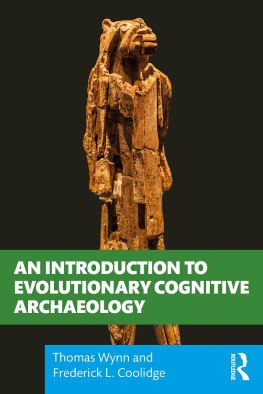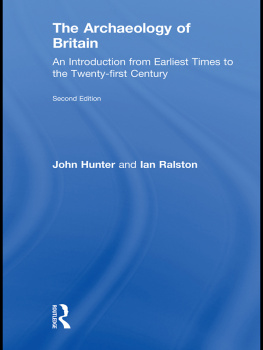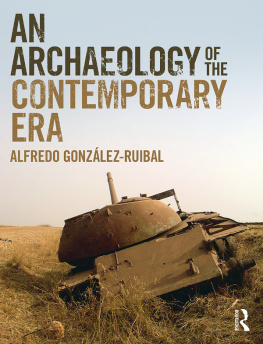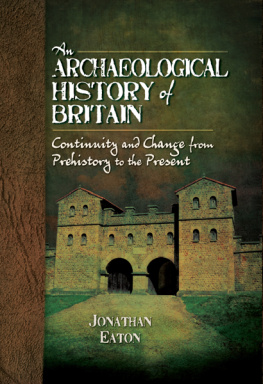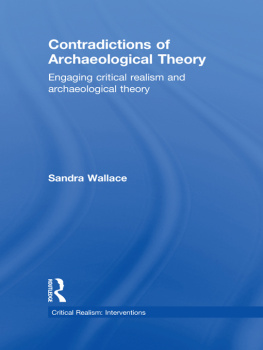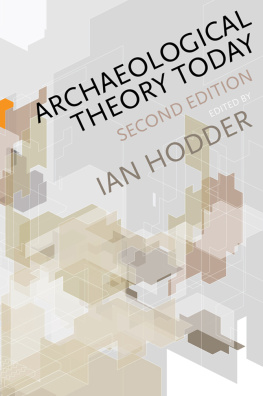First published in 2018 by
Berghahn Books
www.berghahnbooks.com
2018 Andrew Reinhard
All rights reserved. Except for the quotation of short passages for the purposes of criticism and review, no part of this book may be reproduced in any form or by any means, electronic or mechanical, including photocopying, recording, or any information storage and retrieval system now known or to be invented, without written permission of the publisher.
Library of Congress Cataloging-in-Publication Data
Names: Reinhard, Andrew, author.
Title: Archaeogaming: An Introduction to Archaeology in and of Video Games / Andrew Reinhard.
Description: New York: Berghahn Books, 2018. | Includes bibliographical references and index.
Identifiers: LCCN 2018005079 (print) | LCCN 2018005777 (ebook) | ISBN 9781785338748 (Ebook) | ISBN 9781785338724 (hardback: alk. paper)
Subjects: LCSH: Virtual reality in archaeology. | Imaging systems in archaeology. | ArchaeologyComputer simulation. | Video gamesTechnological innovations.
Classification: LCC CC79.I44 (ebook) | LCC CC79.I44 R45 2018 (print) | DDC 930.10285dc23
LC record available at https://lccn.loc.gov/2018005079
British Library Cataloguing in Publication Data
A catalogue record for this book is available from the British Library
ISBN 978-1-78533-872-4 hardback
ISBN 978-1-78533-873-1 paperback
ISBN 978-1-78533-874-8 ebook
For my dad, who introduced me toHomers Odyssey
and Nishikados Space Invaders
Acknowledgments
I would still be a level 1 n00b if it were not for the patient people in my archaeogaming guild who have taken time away from their own quests to assist me in mine. That is what good guildies do, and I hope to return the favor one day. Modern writing is an eSport, and I am lucky to be on the team with these players: From the University of Yorks Centre for Digital Heritage, Meghan Dennis, Emily Johnson, Colleen Morgan, and Sara Perry. From the Atari excavation: Bill Caraher, Raiford Guins, Richard Rothaus, Bret Weber, and Zak Penn. Thanks to Theresa, Cath, Hailey, and Justin for reading early drafts of this manuscript, and to Anna, Viktor, and Maia for encouraging my strange obsession. Thanks also go to Stu Eve for suggesting sections on further reading at the end of each chapter, and to Sian Beavers for sharing her DiGRA presentation with me on historical video games. Thanks to Megan von Ackermann for her last-minute photography of Sore Thumb Games in York.
Thanks to John Aycock and Katy Meyers Emery for grouping with me on archaeogaming articles, and to the editors of Internet Archaeology, Public Archaeology, SAA Archaeological Record, and the Journal of Contemporary Archaeology for publishing early peer-reviewed articles on archaeogaming. I want to also thank Jonathan Ore, Robert Rath, Sarah Bond, Jordan Oloman, Carly Silver, Douglas Heaven, Jennifer Lepies, Damion Collins, Andrew Pallett, Luke Plunkett, and Kathleen Caulderwood for taking a chance on writing about my work for general audiences on the weirdness that is video game archaeology, and to Eleanor Flegg, Chris Webster, Chris Sims, Nora Young, Marc Barkman-Astles, Cobra Smith, Sera Head, Alli Gold, Jen Jamula, and Tristan Boyle for having me on their podcasts and radio programs to talk about archaeogaming.
Thanks to the VALUE Project at the University of Leiden for hosting the first-ever international conference on archaeogaming (2016), The Interactive Past, and for bringing me along for the ride. Thanks also to the University of Umes HUMlab for their enthusiasm for video game archaeology, for their Challenge the Past conference (2015), and for being such a welcome host. The Norwegian University of Science and Technology hosted the Greek and Roman Games in the Computer Age conference (2009), which introduced me to Classical reception in video games (and its grand master Dunstan Lowe) and set me on my way to thinking about video games archaeologically.
Special thanks go to Tara Copplestone, Shawn Graham, and Lorna Richardson for pushing me, asking the difficult questions about the meaning and purpose of video games when studied archaeologically. If it were not for you, there would be no archaeogaming (or at least my flavor of it).
Thanks to my editor, Caryn Berg, for being open to the idea of video games as built environments worthy of archaeological study and for bringing my manuscript to Berghahn Books, and to my friend and agent David Hendin for helping me seal the deal. Thanks also to the three anonymous readers of the initial manuscript whose comments made the final product worlds better.
Thanks to Ute Wartenberg for helping me achieve my dreams.
Thanks to my family for their love and support, especially Cleo who sat on my shoulder throughout and whispered in my ear while I typed.
Some sections of this book first appeared in draft form on my blog at archaeogaming.com, and earlier versions of my thinking on archaeological tools/methods and game-sites appeared in the SAA Archaeological Record and The Interactive Past, which have been updated for this volume. Any mistakes in this book are solely my own, and the above guild members shall remain blameless. I owe you all rounds of Thunder Ale in Orgrimar.
Andrew Reinhard
May 2018
Introduction
Prologue
Its 2014, and a team of archaeologists arrives in the desert of Alamogordo, New Mexico, to watch as a bucket auger drives thirty feet into the earth to retrieve evidence of a 1983 burial. After a few test holes, the auger recovers printed cardboard and a few pages of what appears to be an instruction manual. This is all the proof needed to mark the spot with an X. The salvage excavation begins the next day, a backhoe puncturing the ceiling of a landfill cell in search of the largest (and possibly only) assemblage of video games ever dumped. On the third day of digging, hundreds of Atari cartridges and boxes surface, and the archaeologists catalogue and photograph these artifacts of Late Capitalism, part of a generations material culture and digital heritage.
Its 1996, and I am working my way through the monastery of St. Francis in Greece, having solved several puzzles, nearly falling to my death on several occasions, searching for the tomb of a ruler of Atlantis. Ive just earned my masters in archaeology, and it feels good to blow off steam playing as Lara Croft for the very first time, although Im conscious that this is definitely not representative of archaeology or of how archaeologists behave. Still, its fun to raid these tombs (and to critique the game while I play).
Its 2017, and I have just learned about a climate-induced mass migration of thousands of people. I wonder who they are and what they left behind in their haste to evacuate the planet for another star system. Over the next few days I make my way to their abandoned, icebound homeworld and see the memorials they left as they said goodbye. No Mans Sky is the first video game to feature an accidental catastrophic event that forced human players to flee en masse, and now archaeologists can conduct archaeological investigations into how a digital Vesuvius compares to the historic one and if people reacted similarly in the natural and synthetic worlds.



